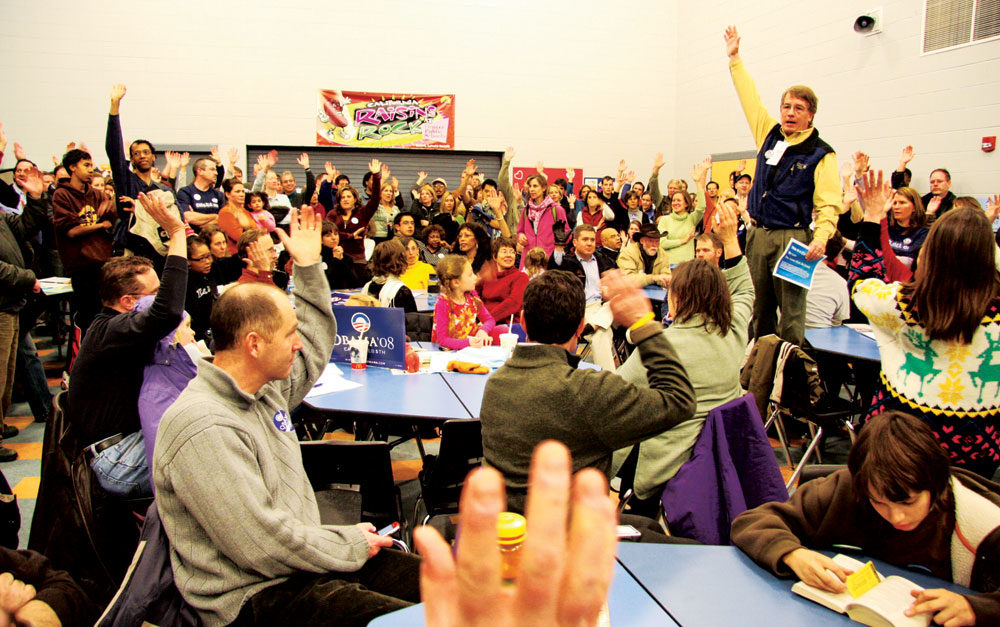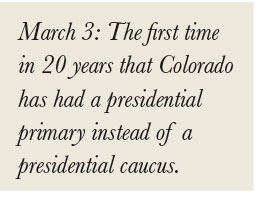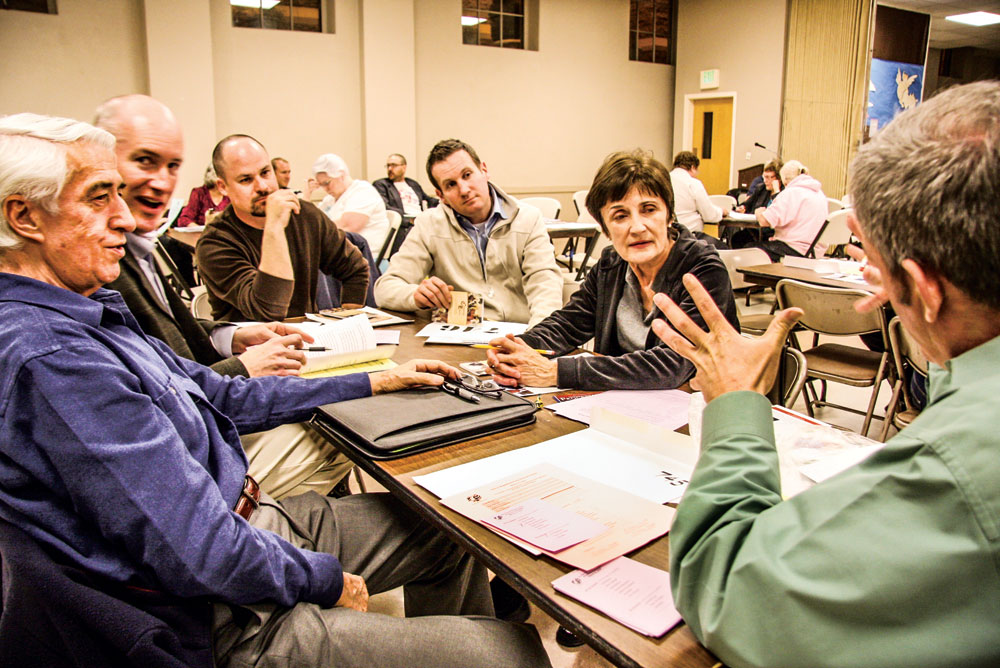
Colorado’s early March presidential primary marks the first time in 20 years that the state had a primary ballot for president instead of a caucus—and that’s just one of three significant changes in this election. This photo was taken at the 2008 Democratic Presidential Caucus at Westerly Creek School.
 Some big changes came to the Colorado caucus and primary system this year—and they have led to confusion about how candidates will be chosen. Here’s a quick primer on what to expect in the coming months.
Some big changes came to the Colorado caucus and primary system this year—and they have led to confusion about how candidates will be chosen. Here’s a quick primer on what to expect in the coming months.
On March 3, Colorado will be part of the Super Tuesday presidential contest. It’s the first time in 20 years that the state has held a primary instead of a presidential caucus; and it’s also the first time unaffiliated voters and 17-year-olds (who will be 18 before November) can vote in a presidential primary in Colorado. Ballots were sent to voters beginning February 10. Unaffiliated voters were sent both a Republican and a Democratic ballot, but could only return one ballot. (If both were returned, neither gets counted.)
The presidential primary determines how many delegates will be sent to the national party conventions held this summer. For Democrats, any presidential candidate who receives 15% of the vote in a state primary will send a proportional number of delegates to the convention, which begins July 13 in Milwaukee. With such a crowded field, delegates will be sent for multiple Democratic candidates. For Republicans, if one candidate receives more than 50% of a state’s primary vote, all the delegates go to that candidate. It’s expected that Donald Trump will easily meet that threshold. The Republican national convention will be held in Charlotte, North Carolina beginning on August 24.

This Democratic caucus photo was taken in March 2010 at Westerly Creek Elementary School.
Three days after the presidential primary, on March 7, Colorado Democrats and Republicans will hold separate precinct caucuses to begin the process of determining which candidates for all state elected offices will appear on the primary ballot on June 30.
There are actually two ways candidates can get on that ballot. One is the caucus system, which is run by the Democratic and Republican parties. Only voters registered with those parties may participate. For the Democratic party, candidates need to receive 15% of the vote—first at the precinct caucuses, then at county or district assemblies, and finally at the state assembly. The caucus process is much more participatory than a primary. Voters meet for several hours and hear speeches from candidates’ surrogates.
“If anyone has ever wanted to have a say on who appears on the primary ballot in the first place, they really should be going to caucus or assembly because those are smaller but they have a very big impact on deciding who actually shows up on the ballot,” says Morgan Carroll, Colorado Democratic Party Chair.

This Republican caucus photo was taken the same night, in March 2010, at Montview Presbyterian Church.
For the Democratic precinct caucus, the marquee race to watch will be for the Democratic nomination for the U.S. Senate. The five candidates who are vying via the assembly process are John Hickenlooper, Andrew Romanoff, Stephany Rose Spaulding, Erik Underwood and Trish Zornio. Results of the preference poll for these Senate candidates will be announced on March 7, although all who receive 15% of the vote will continue through the assembly process. On the Republican side, there is no serious opposition to incumbent Sen. Cory Gardner, so there will be no preference poll conducted on March 7. Ballot eligibility for caucus candidates will be finalized at both parties’ state conventions on April 18.
The second way candidates can get on the June 30 primary ballot is through the petition process, which is managed by the Secretary of State’s office. U.S. Senate candidates must get 10,500 signatures by March 17. Hickenlooper and Underwood are participating in the petition process, as well as the caucus process. Diana Bray, Lorena Garcia, David Goldfisher, Critter Milton and Michelle Farigno Warren are participating only in the petition process.
U.S. House candidates must get 1,500 signatures by the same March 17 deadline. Other state offices have different signature requirements. Once those signatures have been verified, those candidates will appear on the June ballot in addition to the candidates from the caucus process.
The winners of the June 30 state primary election will then go on to compete in the general election to be held on November 3, 2020.



0 Comments